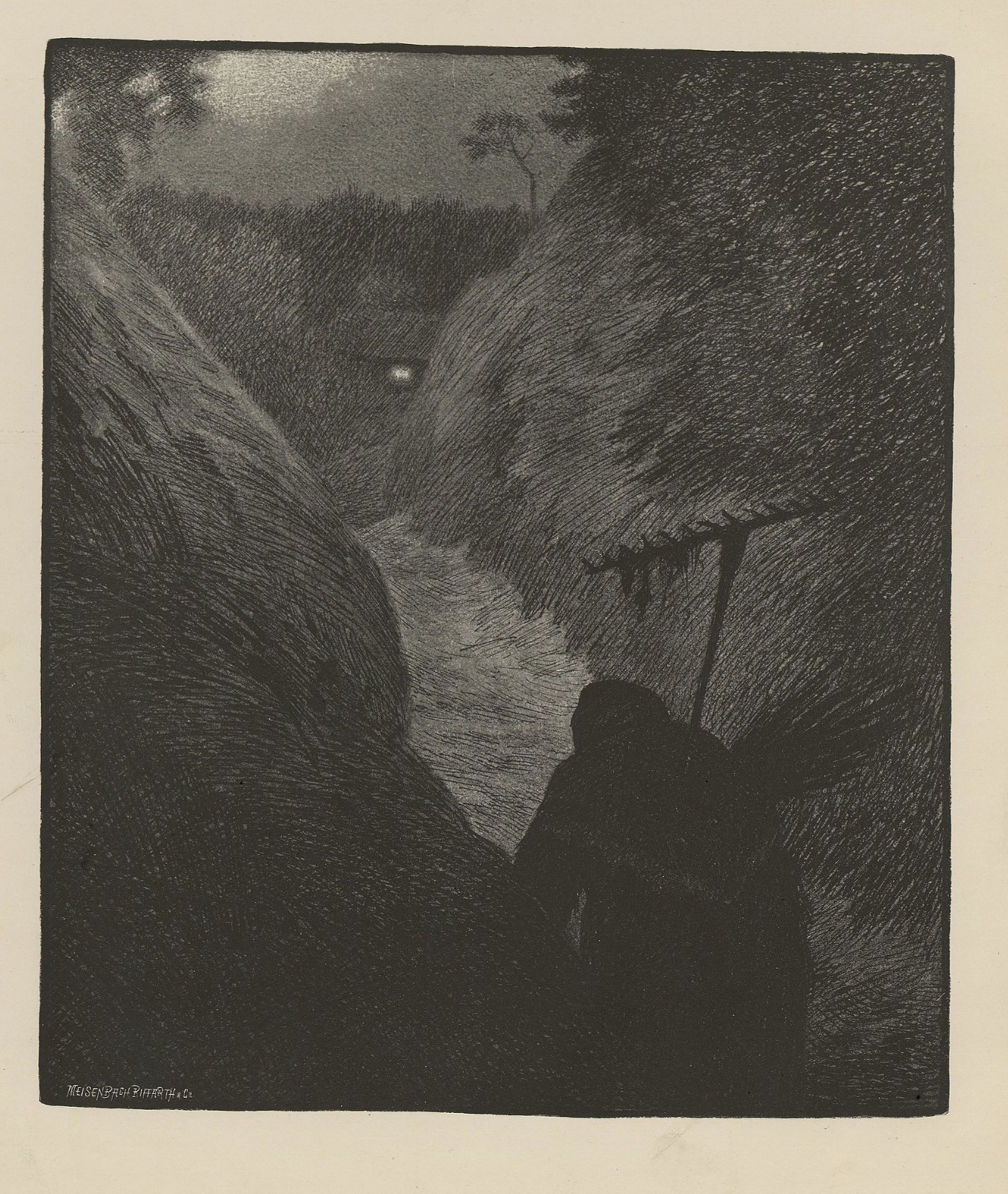
The shadowy figure of Pesta- the plague hag- approaches a farm house. She is clad in a black hood and a red skirt and brings with her the pestilence that decimated Europe in the 14th century. She is the personification of the Black Death. The people in this farm house, though, are comparatively lucky, for she carries with her a rake and not only a broom. If Pesta brings her rake some will survive, passing through the teeth of the rake. If she was instead carrying only her broom, all would perish.
The drawing above was done by Theodor Kittelsen a Norwegian artist born at the end of the 19th century. Kittlesen is most famous for drawing trolls that are common in the Scandinavian folklore, but he also completed a work called “Svartedauen” (Black Death) that is filled with poems and images of the folklore that surrounded the 14th century plague. Pesta is featured prominently in this work.
This type of personification of death and disease is common during the late medieval period. It represents an attempt to explain a horrifying experience. The folklore of the black plague developed through observation of events that must have seemed inexplicable to the people living through them. We can, however, learn something about how the events unfolded through a careful examination of the folklore of Pesta. Folklorist argue that folklore can be true and can be the results of individuals “rationally perceiving a real situation.” Through the story of Pesta and her path across Norway, we see an attempt to explain the spread of a disease based on actual observations. While the entity of Pesta is not a literal being, we can imagine her as a representation of the microbe that we know today.
Descriptions of Pesta traveling through the countryside trace a path that the disease took. She travels from farm to farm, walks through the countryside and flies over mountains. Perhaps most interestingly, she traveled by boat. When she traveled by boat all of the boatmen fell ill and died. This tale reflects on an event that occurred multiple times during the outbreaks of the black plague. Travel by boat was a common mode of transmission. In fact, plague is believed to have come to Norway via a ghost ship filled with infected rats. The story portrays the boatmen as both victims of Pesta and carriers. They are carriers in the story of a literal entity- Pesta- that brings disease, but they are also carriers in the modern sense of the word, harboring microbes that will be passed on to the populations they encounter. The plague bacteria even shares a similar name- Yersinia pestis. We can trace a similar path by following either the stories of Pesta or the actual Y. pestis arriving via boat.
Sources:
Holmøy T (2008) Pesta on the Stairs. Academic Medicine 83(1): 74-75.
http://journals.lww.com/academicmedicine/Fulltext/2008/01000/Pesta_on_the_Stairs.11.aspx
McNeill L (2013) Folklore Rules: A fun, quick, and useful introduction to the field of academic folklore studies. Boulder, CO: Utah State University Press.
https://www.amazon.com/Folklore-Rules-Introduction-Academic-Studies/dp/0874219051
Inglis-Artkell E (Dec 29 2014) Plague Came to Norway in the Creepiest Way Possible. iO9: Gizomodo. http://io9.gizmodo.com/the-black-plague-came-to-norway-in-the-creepiest-way-po-1675917635
“Theodor Kittelsen”
http://www.theodorkittelsen.no/en/
5 responses to “Pesta: The Personification of the Black Plague in Norway”
[…] https://mythsandmicrobes.com/2016/09/29/pesta-the-personification-of-the-black-plague-in-norway/ […]
LikeLike
[…] Pesta: The Personification of the Black Plague in Norway […]
LikeLike
[…] as well-poisoners. For people struggling to cope with the sudden, inexplicable ravages of Pesta the inference of a malevolent hand ruining the water supply was a natural one; it emerges […]
LikeLike
[…] Buerger, Sandra (2016), ‘Pesta: The Personification of the Black Plague in Norway’, Myths and Microbes, https://mythsandmicrobes.com/2016/09/29/pesta-the-personification-of-the-black-plague-in-norway/. […]
LikeLike
[…] Read More […]
LikeLike